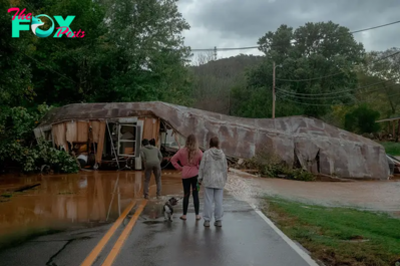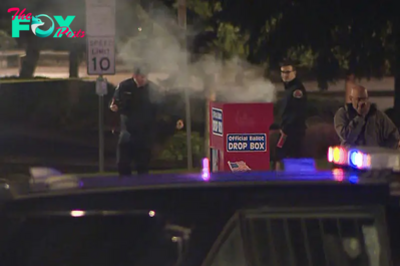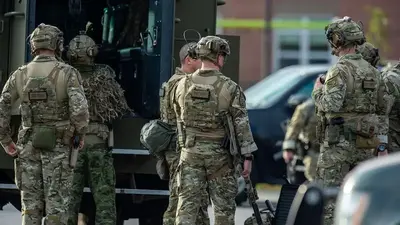US News
New York's right-to-shelter policy faces scrutiny amid migrant crisis
New York City Mayor Eric Adams is narrowing the timeline in which migrants can stay in city-run facilities as he takes the battle over the state's "right-to-shelter" laws to court.
More than 60,000 migrants are in the city's care, according to city officials, as Texas officials continue sending busloads of migrants from the border to Democrat-led cities in a move that New York Mayor Eric Adams has called a "political stunt" and "dehumanizing" for migrants seeking asylum.
Texas Gov. Greg Abbott said the busing brings attention to the migrant crisis at the U.S.-Mexico border.
What do the 'right-to-shelter' laws entail?
The New York State Constitution states that "the aid, care and support of the needy are public concerns and shall be provided by the state and by such of its subdivisions, and in such manner and by such means, as the legislature may from time to time determine."
MORE: Migrants share joy, woes amid rise in arrivals on southern border: Reporter's notebook
In 1979, the Coalition for the Homeless sued state and city officials on behalf of homeless men in New York City in the court case Callahan v. Carey, arguing that a right to shelter for the homeless existed under the New York State Constitution.

That lawsuit led to a 1981 consent decree. The consent decree required that the city and state provide temporary emergency shelter to anybody who "meets the need standard to qualify for the home relief program established in New York State," or "by reason to physical, mental or social dysfunction, is in need of temporary shelter."
The right to shelter was extended to homeless women by Eldredge v. Koch in 1983 and to homeless families with children by McCain v. Koch in 1983, according to the Coalition for the Homeless.
How does this impact the ongoing migrant crisis?
The city requested in May that the language of the decree be changed to allow the city to forgo its obligation if it lacks "the resources and capacity to establish and maintain sufficient shelter sites, staffing, and security to provide safe and appropriate shelter," according to court filings.
In housing tens of migrants who lack basic resources, the city argues that it is "facing an unprecedented demand on its shelter capacity," and that these challenges could never have been "contemplated, foreseeable, or indeed even remotely imagined" when the consent decree was originally agreed upon.
The mayor has already begun to limit the extent of the city's right to shelter obligations.
All asylum seekers arriving for the first time will now receive a 30-day period to find alternate housing outside of a city-run facility, supported by "intensified casework services" to "discuss their options and plan their next steps," according to Adams' office.
Adult asylum seekers were previously given 60-day notices to find alternate housing. Those who have not yet secured housing under the 60-day notice and seek to reapply for shelter will be given an additional 30 days with intensified casework services under Adams' plan.
"For over a year, New York City has stepped up while waiting for the substantial help necessary from federal and state partners to comprehensively address this crisis and support the tens of thousands of asylum seekers in our care, and today's announcement is another step in our efforts to help asylum seekers take the next step in their journeys," said Adams on Friday when he announced the new restrictions.

He continued, "With more than 60,000 asylum seekers still in our care and without additional help, we will be forced to continue making difficult decisions."
The city said it has opened 210 emergency shelters, including 17 total large-scale humanitarian relief centers, to take care of the influx of migrants.
MORE: Migrant crisis explained: What's behind the border surge
Critics say the move is unnecessary after the federal government announced that it would be expanding Temporary Protected Status for Venezuelans and expanding resources to job opportunities to transition people from shelters. Housing advocates also assert that an end to the right to shelter policies for migrants will spur a surge in homelessness.
"Any policy limiting the amount of time that our clients can reside in shelter is arbitrary and devoid of compassion," the Legal Aid Society and the Coalition for the Homeless said in a joint statement. The two organizations are fighting the city's attempts to restrict the right to shelter.
It continued, "Pushing new arrivals who have nowhere else to turn out of the shelters risks dramatically increasing the number of people bedding down on the streets, something nobody wants to see happen."
City officials and right-to-shelter advocates will return to court Tuesday to continue discussions.
-

 US News16h ago
US News16h agoMore Than a Month Later, Communities Struggle to Rebuild After Hurricanes Helene and Milton
-

 US News2d ago
US News2d agoWhat to Know About the Suspect Behind Ballot Box Fires in the Northwest
-

 US News3d ago
US News3d agoSupreme Court Allows Virginia to Resume Its Purge of Voter Registrations
-

 US News5d ago
US News5d agoHow Communities Impacted by Hurricanes Helene and Milton Are Celebrating Halloween
-

 US News5d ago
US News5d agoThe U.S. Tasked Deborah Lipstadt With Monitoring Antisemitism. She’s Been Busy
-

 US News6d ago
US News6d agoKamala Harris Shouldn’t Just Embrace Crypto. She Must Help It Flourish
-

 US News6d ago
US News6d agoWhat Minnesota’s Fifth District Race Reveals About the State of Identity Politics
-

 US News6d ago
US News6d agoPolice Say Fires Set at Ballot Boxes in Oregon and Washington Are Connected



























